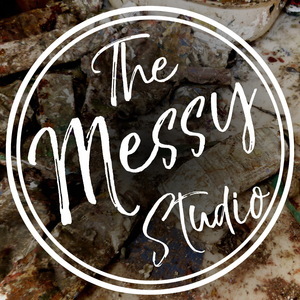Abstracting Our Visual Experience
Episode 152 · November 21st, 2020 · 36 mins 45 secs
About this Episode
Abstraction takes many forms for artists—from working with the visual elements for their own sakes to using emotion and mood as a starting point, to interpreting what they see in the world around them. Many artists combine these approaches to find their own personal voice in abstraction. Today we are going to examine the path favored by many artists who are inspired by the figure, the landscape, or other subjects in the visual world while avoiding literal depiction. What are some things to consider if this is your own direction, or intrigues you with its possibilities?
A starting point is asking in what ways would you want to engage the viewer. Do you want the viewer to identify the source ideas of your work? You can be inspired by the visual world yet leave little obvious evidence of that. Some works of art might not show source ideas in the visual world at all even though they underlie the composition or color choices of the artist. Other artists seek to evoke associations with the visual world without including specific images, while others give more clues to guide the interpretation.
If you are interested in this approach, consider what clues you are giving the viewer and if they align with how you would like the image to be understood. For example, an illusion of space has a lot to do with how an abstracted landscape is perceived. Once there is a sense of physical depth, of looking at a scene, the literal reference become stronger. For example, the inclusion of a horizon line evokes pictorial depth. In abstracted figures, the amount of detail in the face or clothing may be connected to the degree of literal representation. The kind of title, whether open-ended or specific, is also a powerful way to direct the viewer's interpretation.
Abstraction also typically emphasizes just a few of the visual elements, rather than using the full range necessary in realism. Expressive use of the visual elements in a way freed from representation is also a hallmark of abstraction. This can take the form of gestural marks, use of subjective color, simplified shape, bold contrast, and many other approaches.
People often have limited ideas of what abstraction means—that it is just about shape or color or design. But you only have to think about the early modernist artists like Matisse and Cezanne to notice their movement away from realism into abstraction while retaining subject matter.
Support The Messy Studio when you buy art supplies from Blick.com by using our affiliate link. Right now PanPastels are 20-40% off!!
www.messystudiopodcast.com/blick
Thanks to everyone who has been sharing the show and those who have donated anonymously via PayPal. If you would like your own shoutout on the podcast donate here.
Cold Wax Academy (formerly Squeegee Press) would like everyone who enjoys using their special cold wax tools to know that all sizes of SP Create squeegees are back in stock! Rebecca and her partner Jerry McLaughlin are also launching their online live learning sessions as part of the new membership program, and all sessions will be recorded for future viewing by members. For more information, and to become a member of Cold Wax Academy please visit their website at http://www.coldwaxacademy.com and click on the Membership button.
Have an art related product, service, or event you would like to advertise on the Messy Studio Podcast?
Email Ross at [email protected] for current mid-roll advertising rates.
For more from The Messy Studio:
www.messystudiopodcast.com
www.facebook.com/messystudiopodcast
For more from Rebecca Crowell:
www.rebeccacrowell.com
www.coldwaxacademy.com
The Messy Studio Podcast is a CORE Publication MGMT production.
